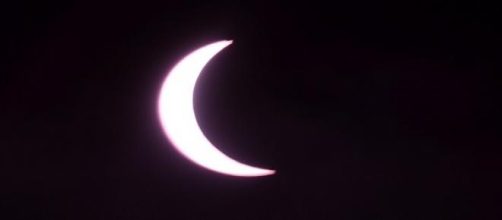The long awaited day of the eclipse finally arrived today with millions of people in Northern Europe able to experience the moment when the light of the sun was obscured by the passing of the moon. The UK and Norway proved to be particularly good places to view the eclipse, though it was seen across Europe from Bulgaria to Portugal, Germany to Iceland. There were even reported sightings as far south as Morocco.
In terms of area, Northern Scotland and Wales proved to be good places from which to observe the phenomenon. The UK's northernmost isles, Shetland, experienced a 97% eclipse, peaking at 09.43, with the rest of the UK experiencing an eclipse of around 83% at around 09.35. Despite forecasts of cloud and drizzle, the sun was able to break through at the right moment to allow interested observers to experience this once-in-a-generation experience.
Observers were able to watch the moon gradually cover the sun. Children experiencing their first ever eclipse commented how the sun appeared like the moon, as observers watched a diminishing crescent of the sun in the sky as the Earth's orbiting satellite passed in front of it. The sky turned darker for a few minutes and the temperature seemed to drop a few degrees, before returning to normal. Scientists recorded the moon travelling at around 1,400 mph so the effect lasted only a couple of minutes.
In preparation for the "first great astronomical event of the century," millions of people went out and bought eclipse glasses, a dark version of the cardboard framed 3D glasses you used to get for watching films. The glasses are specially designed to filter out UV, infra-red and most of the harmful visible light so that wearer can safely look towards the sun. People found other ingenious ways of observing the eclipse without looking at the sun by using a colander or a make-shift pin-hole camera. For some eagerly anticipated viewers, it proved to be anti-climatic as a large band of cloud blocked out the sun for the duration leaving many people disappointed.
The last eclipse in the UK was seen on 11 August 1999 with 100% totality seen in Cornwall; the next one is not due in these shores until 12 August 2026 so it is understandable why so many people were keen to see it this time. Bizarrely, today's eclipse also coincided with the Vernal Equinox. Only 2 land masses managed to achieve a 100% eclipse or total obscurity. These lucky places were the Faroe Isles and the Norwegian archipelago, Svarbad. The Faroes achieved total blackout at 09.41 for a full two minutes, whilst Longyearbean in Svarbad had "totality" for two and a half minutes at 10.10. Those fortunate enough to witness this spectacular sight could see "Baily's beads," the sparkles of light at the edge of the moon around which you could observe a red glow.
Whilst an eclipse occurs around once every eighteen months somewhere on the Earth, it is extremely rare for one to occur in the same place - scientists claim it is once every 375 years. There will however be another eclipse next year on 9 March around Sumatra and Borneo. The US will get its chance on 21 August 2017 when the eclipse is due to pass from the West to the East coast. Following today's events, people are already getting excited about the eclipse's return and will already be starting to plan where they will best see it.

